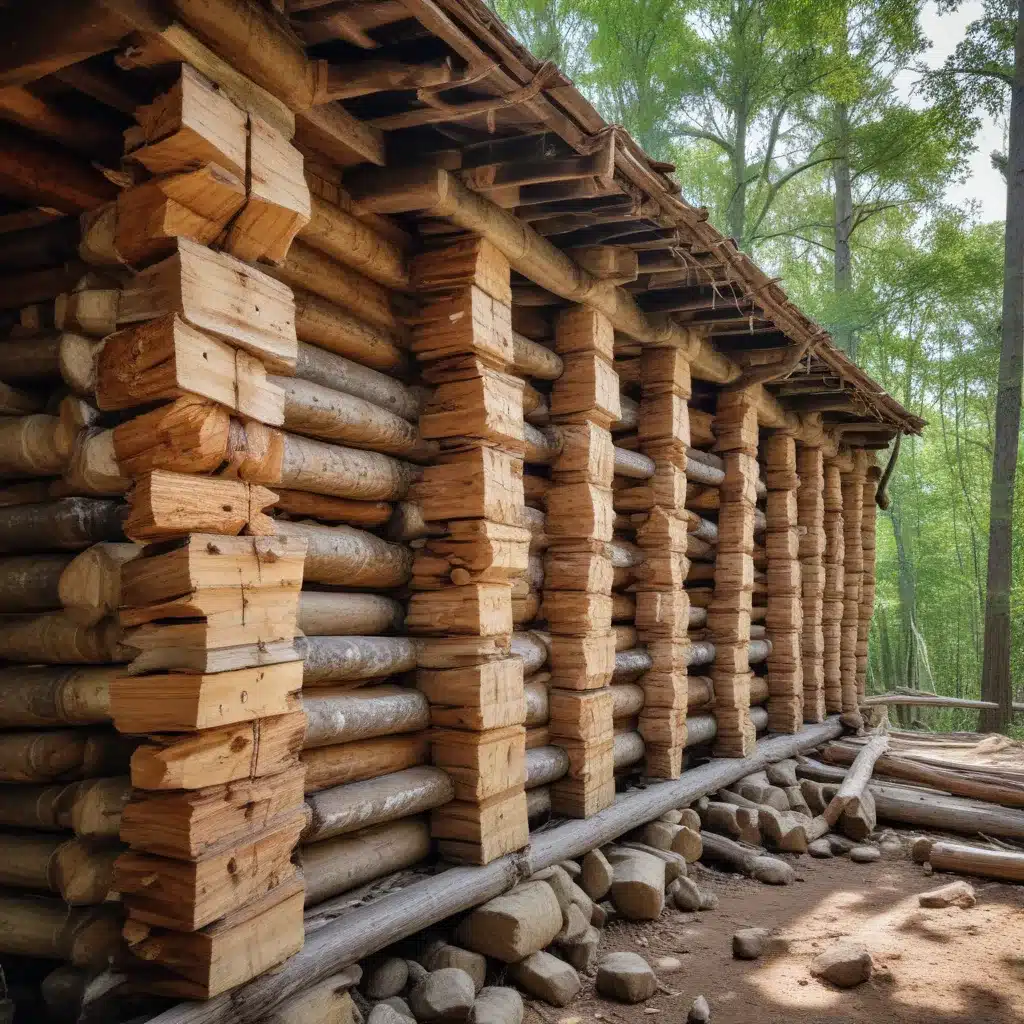
Understanding the Importance of Moisture Control in Log Homes
Maintaining the structural integrity and aesthetic appeal of historic log homes requires a deep understanding of moisture management. Log structures, by their very nature, are vulnerable to the detrimental effects of water, which can lead to rot, insect infestation, and even structural failure if left unchecked. As a homeowner or contractor working with log cabins and timber frame homes, it is essential to prioritize strategies that effectively manage and mitigate moisture-related issues.
Excessive moisture can cause a range of problems in log homes, from warping and cracking of timber to the growth of mold and mildew. These issues not only compromise the structural soundness of the building but also jeopardize the health and safety of its occupants. Addressing moisture management is, therefore, a critical aspect of log home construction and maintenance.
Assessing Moisture Risks in Log Structures
Before delving into the strategies for moisture control, it is crucial to understand the common sources of moisture that can infiltrate log homes. These include:
- Precipitation: Rain, snow, and melting ice can seep into the logs, especially if the building’s exterior is not properly sealed and weatherproofed.
- Groundwater: Improper site drainage or a high water table can allow groundwater to accumulate around the foundation, eventually wicking up into the logs.
- Condensation: Warm, moist air coming into contact with cooler surfaces can lead to the formation of condensation, which can accumulate within the log structure.
- Plumbing Leaks: Faulty or aging plumbing systems can cause water leaks that contribute to moisture buildup.
By identifying the potential moisture sources, homeowners and contractors can develop a comprehensive plan to address these issues and protect the log home’s structural integrity.
Implementing Effective Moisture Management Strategies
Effective moisture management in log homes involves a multifaceted approach that addresses both the prevention and mitigation of moisture-related problems. Here are some key strategies to consider:
Site Preparation and Drainage
Proper site preparation is the foundation of effective moisture management. Ensure that the land surrounding the log home is graded to direct water away from the foundation, and install a robust drainage system to divert groundwater and surface runoff. This may include installing French drains, swales, or other drainage solutions to keep the area around the log home dry.
Weatherproofing and Sealants
Weatherproofing the log home’s exterior is crucial for preventing moisture intrusion. This may involve applying high-quality sealants, caulks, and finishes to the logs, as well as ensuring proper flashing around windows, doors, and roof intersections. Regular maintenance and reapplication of these sealants are essential to maintain their effectiveness over time.
Ventilation and Humidity Control
Effective ventilation and humidity control are key to managing condensation within the log structure. Install appropriately sized and positioned vents, fans, or dehumidifiers to regulate airflow and maintain optimal humidity levels. Proper insulation can also help to prevent the formation of condensation on cool surfaces.
Plumbing and Appliance Maintenance
Regularly inspect and maintain the plumbing systems and appliances within the log home to prevent leaks and water damage. Promptly address any issues, such as leaky faucets or worn-out seals, to minimize the risk of moisture accumulation.
Structural Integrity and Restoration
In the case of historic log structures, it is important to assess the structural integrity of the logs and address any existing moisture-related damage. This may involve replacing severely deteriorated logs, reinforcing the structure, or implementing specialized restoration techniques to preserve the character and longevity of the log home.
Evaluating the Costs of Moisture Management
Addressing moisture management in log homes can involve a range of costs, depending on the scale and complexity of the issues. Here is a general breakdown of the potential expenses:
| Moisture Management Strategies | Estimated Cost Range (USD, as of September 2024) |
|---|---|
| Site Preparation and Drainage | $5,000 – $15,000 |
| Weatherproofing and Sealants | $3,000 – $10,000 |
| Ventilation and Humidity Control | $2,000 – $8,000 |
| Plumbing and Appliance Maintenance | $500 – $3,000 |
| Structural Integrity and Restoration | $10,000 – $50,000+ |
It is important to note that these cost estimates are general and may vary depending on the size of the log home, its location, the severity of the moisture-related issues, and the specific materials and labor required.
Prioritizing Eco-Friendly Materials and Energy Efficiency
When addressing moisture management in log homes, it is also essential to consider the use of eco-friendly materials and energy-efficient solutions. This not only benefits the environment but can also improve the long-term sustainability and cost-effectiveness of the log home.
Some eco-friendly materials and energy-efficient features to consider include:
- Natural Log Preservation Treatments: Opt for plant-based or low-toxicity preservatives that protect the logs without relying on harmful chemicals.
- Insulation: Incorporate high-performance insulation materials, such as recycled cellulose or natural fibers, to enhance the home’s thermal efficiency.
- Renewable Energy Sources: Integrate renewable energy systems, such as solar panels or geothermal heat pumps, to reduce the log home’s carbon footprint and energy costs.
- Water Conservation Measures: Install water-efficient plumbing fixtures, rainwater harvesting systems, and xeriscaping to minimize water consumption and reduce the risk of moisture-related issues.
By adopting these eco-friendly and energy-efficient strategies, log home owners and builders can create structures that are not only aesthetically pleasing but also environmentally responsible and cost-effective in the long run.
Conclusion
Addressing moisture management in historic log structures is a critical aspect of preserving these iconic architectural treasures. By understanding the common sources of moisture, implementing comprehensive moisture control strategies, and incorporating eco-friendly materials and energy-efficient solutions, log home owners and builders can ensure the structural integrity, longevity, and sustainability of these beloved structures. By prioritizing moisture management, homeowners and contractors can protect the character and charm of log homes while safeguarding the health and well-being of their occupants. For more information on log home construction and timber frame homes, visit Jorgensen Log Homes.


